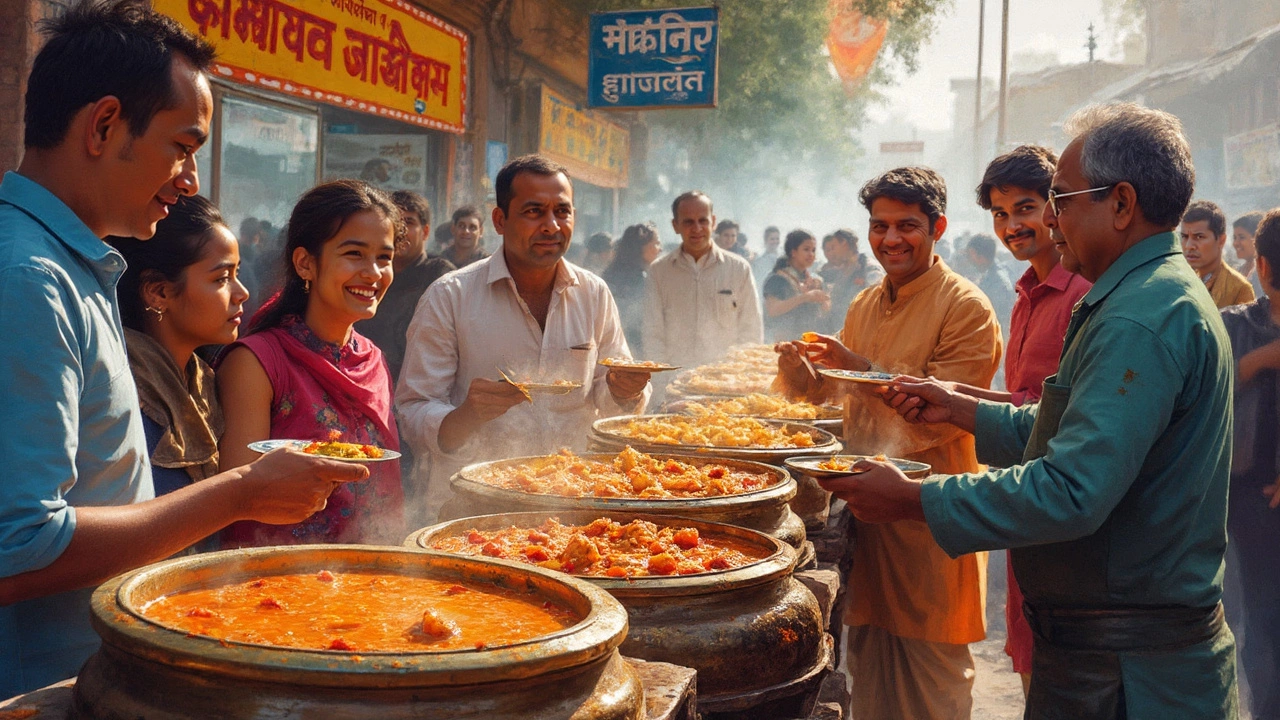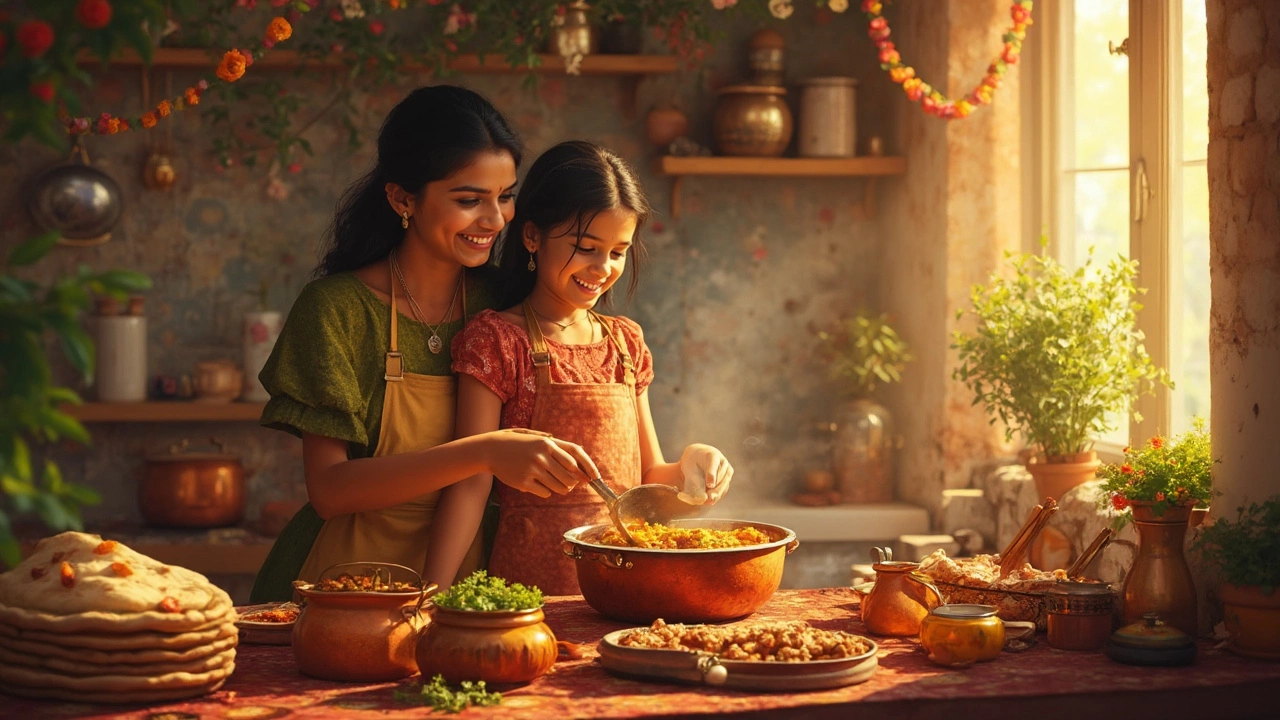9 May 2025
- 0 Comments
Curry is one of those dishes that can turn a boring dinner into something you look forward to all day. But if you've ever wondered, "Which Indian curry is actually the tastiest?" you're not alone. There are hundreds, maybe thousands, of different curries across India, each with its own fan base.
Everyone has an opinion on what makes the "best" curry. Some fight for the creamy punch of butter chicken; others swear by the bold, spicy flavors of vindaloo. But here's the truth: the tastiest curry isn’t just about heat or cream—it’s about balance. You want bright spices, a sauce that’s not runny or greasy, and meat or veggies cooked just right. Even the type of tomato you use can change everything.
Cooking the best curry at home doesn’t mean filling your cart with stuff you’ll only use once. Even if you stick to basic pantry staples—like onions, garlic, ginger, and a handful of ground spices—you can pull off something that tastes like it came from a good Indian restaurant. Curry powder from the grocery shelf can work in a pinch, but grinding your own spices or using whole spices always brings a deeper flavor. Trust me, toasting them for just a minute before adding anything else genuinely levels up your curry game.
- What Makes a Curry Stand Out?
- Famous Indian Curries You Need to Try
- Quick Tips for Making Tasty Curry at Home
- Lesser-Known Curries Worth a Shot
- Getting the Taste Just Right—Pro Tips
What Makes a Curry Stand Out?
When you think about a curry that just knocks your socks off, it almost always comes down to three things: flavor, texture, and balance. Let’s break it down a bit more. First off, flavor in Indian curry is all about layers. The basic building block is a masala—usually a mix of onions, garlic, ginger, and spices cooked just right. Most home cooks can nail a decent curry by paying attention to their spices. Freshness matters: ground spices start losing punch after just six months, so buy small amounts unless you’re cooking curry every week.
- Indian curry shines when spices are toasted before liquid goes in. This wakes up flavors you can actually smell in the finished curry.
- Fat counts. Curries don’t need to be oily, but a little ghee or neutral oil carries all those spices. Too little fat and you end up with a flat-tasting sauce.
- Tomatoes or yogurt are usually added for tang. They balance richness and make the dish feel lighter, even if it’s a heavy cream-based curry.
- Heat is personal. Classic curries like vindaloo or Chettinad go hot, but others like korma stay mellow. Adjust the chili powder so it works for you, not someone’s idea of “authentic.”
Here’s a quick look at what really goes into some of the most popular curries, and why people crave them:
| Curry Name | Main Feature | Typical Key Ingredients |
|---|---|---|
| Butter Chicken | Creamy & Mild, Tangy | Tomato, Cream, Butter, Garam Masala |
| Tikka Masala | Smoky, Bright Color | Charred Chicken, Cream, Spices, Tomato |
| Rogan Josh | Aromatic, Deep Red | Lamb, Yogurt, Kashmiri Chili, Fennel |
| Chana Masala | Vegetarian, Hearty | Chickpeas, Tomato, Onion, Fresh Cilantro |
If you walk into any Indian kitchen, you’ll probably see cooks taste-testing before serving. That’s really the secret. Think it needs salt? Add a pinch. Too acidic? Add sugar. There’s no shame in making a curry your own—most Indian home cooks do exactly that. In the end, the tastiest curry for you is the one that hits all your taste buds just right.
Famous Indian Curries You Need to Try
You can't talk about curry in India without mentioning the classics. Each region has its go-to, but a few dishes have basically taken over Indian restaurants around the world. These are the ones you’ll want to know—and cook—if you’re after real flavor.
- Butter Chicken (Murgh Makhani): This is probably the most-requested curry in Indian restaurants worldwide. The creamy tomato sauce is rich but not heavy, with just the right hit of ginger, garlic, and spices. It's actually pretty modern, created in the 1950s at a Delhi restaurant. Great with naan or rice.
- Chicken Tikka Masala: Controversy alert: This one likely got its big start in the UK, but it’s now part of the global Indian curry scene. It’s known for its orange, creamy sauce and grilled chicken chunks. Walk into any curry house in London—yup, this is the bestseller.
- Rogan Josh: This lamb curry is all about deep, aromatic spices and a signature red colour from Kashmiri chilies (usually not that hot—don't worry). The name literally means "red juice," and it’s a total winter warmer.
- Chana Masala: If you’re after a veggie Indian curry, this chickpea stew is your winner. Full of tomato, onion, and garam masala—plus a squeeze of lemon at the end, which is key. It’s a staple in North Indian homes.
- Vindaloo: Famous in Goa, this one’s got a punch. Originals used pork, vinegar, and garlic—Goan Christian influences. You’ll find chicken and lamb versions everywhere now, usually pretty spicy, so adjust to your heat preference.
Here’s something that sums it up perfectly:
"Good curry is all about the balance of spices—no one flavour should knock the others out." — Madhur Jaffrey, Indian food writer and chef
Just how popular are these curries? Check out this simple chart:
| Curry Name | Estimated Global Orders Per Year |
|---|---|
| Butter Chicken | Over 150 million |
| Chicken Tikka Masala | 120 million |
| Chana Masala | 45 million |
| Rogan Josh | 30 million |
| Vindaloo | 20 million |
If you’re only going to try a few, these are the front runners. The easiest way to test which one’s the best curry? Just cook one at home and see which disappears from your table first.

Quick Tips for Making Tasty Curry at Home
It’s not magic—getting your curry to taste restaurant-worthy just comes down to some easy habits in the kitchen. You don’t need special tools or hard-to-find ingredients. Most people already have what they need for a solid curry.
First up, don’t rush the onions. Let them go low and slow until they’re golden brown; this forms the base of any great Indian curry. Rushing this step leads to a raw, sharp flavor instead of a rich one.
Spices are the next big thing. Toasting whole spices (like cumin or mustard seeds) in a dry pan for 30 seconds does wonders for flavor. If you’re working with ground spices, add them to hot oil just before adding tomatoes or liquids. This wakes up the flavor instead of leaving your curry flat.
- Use fresh ginger and garlic. Pre-made pastes work, but fresh chopped or grated gives sharper flavor and better aroma.
- Layer your flavors. After toasting spices, cook tomatoes or yogurt until the oil starts to separate. This is a classic sign you’ve cooked out the tang and rawness.
- Don’t drown your curry. Add water or broth a little at a time so your sauce thickens and clings to your veggies or meat.
- Finish with something fresh. A splash of lemon juice or a sprinkle of chopped cilantro at the end can brighten the whole dish.
One trick from Indian home cooks: adding a pinch of sugar balances tomatoes if they’re too sour, and a tiny splash of cream brings silky smoothness without heavy calories. If you like it spicy, add heat late in the cooking process so you can still taste all the other spices.
If you’re going for a classic like tikka masala or butter chicken, marinating your meat—even 30 minutes in yogurt and spices—helps lock in juiciness and flavor. And if you want it vegan or vegetarian, don’t skip the marinating step with paneer, tofu, or even hearty veggies.
There’s no right or wrong—taste as you go. That’s honestly how most people in India tweak recipes to make their curry perfect for their own family. Grab those pantry staples and start mixing; you’ll be surprised how close you can get to your favorite takeaway curry at home.
Lesser-Known Curries Worth a Shot
Okay, let’s move beyond the usual stars like tikka masala and butter chicken. Some Indian curries pack huge flavor but rarely get the spotlight—yet they might be the most eye-opening dishes you try. These are the ones even most regulars at Indian restaurants often miss out on.
First up: Chettinad chicken curry. This gem comes from South India, especially Tamil Nadu. It stands out thanks to a load of spices like fennel, star anise, and black pepper, plus coconut for either richness or a dry, sweet edge. It's fiery, but also full-bodied, and it’s usually served with rice or flatbreads. If you like your food to have a real punch, this is a must-try.
Another underrated winner is Bengali fish curry, also called “Maacher Jhol.” This one is a huge deal in eastern India and goes heavy on mustard oil, fresh turmeric, and sometimes even green mango. The sauce is thin, almost soupy, and it’s about the fish more than anything else. Use any firm, white fish—cod or tilapia work at home. What matters is that sharp, bright flavor from mustard seeds and the yellow glow from turmeric.
Ever heard of “Goan Xacuti”? It’s a coconut curry famous along the western coast (Goa), but rarely ordered outside there. The secret is roasting the coconut with dried red chilies and poppy seeds—this gives it a deep, roasty flavor. People love it with chicken or lamb, but you can honestly use whatever protein you want.
And if you want something vegetarian, look for “Kadhi.” This is a curd-based yellow curry thickened with chickpea flour. It’s tangy, cozy, and often loaded with fried veggie fritters called pakoras. North India does their own take while folks in Gujarat and Rajasthan add their spin with either slight sweetness or extra tang. It’s the kind of comfort food you crave on a rainy day.
- Don’t be scared by unfamiliar names—most of these curries use stuff from regular grocery stores today.
- If you’re chasing real Indian curry flavors, experiment with these hidden gems. Try one each week or swap them in for your usual order.
- Making these at home? Don’t skip key ingredients like fresh ginger, mustard seeds, or coconut—they’re what take these curries out of “generic” territory.
These lesser-known curries prove there’s way more to Indian food than just the usual suspects. Dive into these, and your taste buds will thank you.

Getting the Taste Just Right—Pro Tips
Nailing the perfect curry is way easier when you know a few industry secrets. Even small tweaks can make your dish taste like it came from a legit Indian kitchen, not a rushed weeknight dinner. Want to know what separates a blah pot of curry from a deeply satisfying one? Here’s what really counts:
- Start slow with onions. Nearly every tasty Indian curry starts by letting onions go golden brown—sometimes even darker. This brings out a deep sweetness and body in your sauce. If your onions are just soft and see-through, you’re missing out on tons of flavor.
- Bloom your spices. This tip makes all the difference. Add your ground or whole spices to hot oil before anything else. Let them sizzle for half a minute. It wakes up the aroma and makes the base much richer.
- Balance the flavors. Indian curries are famous for that perfect mix of salty, spicy, tangy, and a tiny bit sweet. If your curry tastes a bit harsh or flat, a squeeze of lemon or a pinch of sugar or jaggery can fix it fast. A splash of cream or coconut milk can also mellow out too much heat.
- Choose the right tomatoes. Fresh tomatoes taste different than canned, which is different from store-bought puree. Each one changes the curry’s color and flavor. If you want a bright, slightly sweet sauce, stick with ripe, red fresh tomatoes or use San Marzano canned ones.
- Let it simmer. The longer your curry simmers—especially on low—the more the flavors come together. This step turns a regular curry into something with that cozy, restaurant-style depth. If you have the time, let your curry rest for at least 20 minutes before serving.
- Taste test near the end. Always try your curry before serving! Is it missing salt? A little more garam masala needed? You’ll only know if you check. Chefs in India do this every single time, tweaking right up to the last minute.
The real trick to whipping up the best curry at home? Don’t be afraid to put your own spin on things. If you prefer your sauce a little thinner or spicier, go for it. That’s how all the best home cooks get their signature style. Trust your taste—and don’t forget to write down what works, so next time you’re only a pot and a few spices away from Indian perfection.
